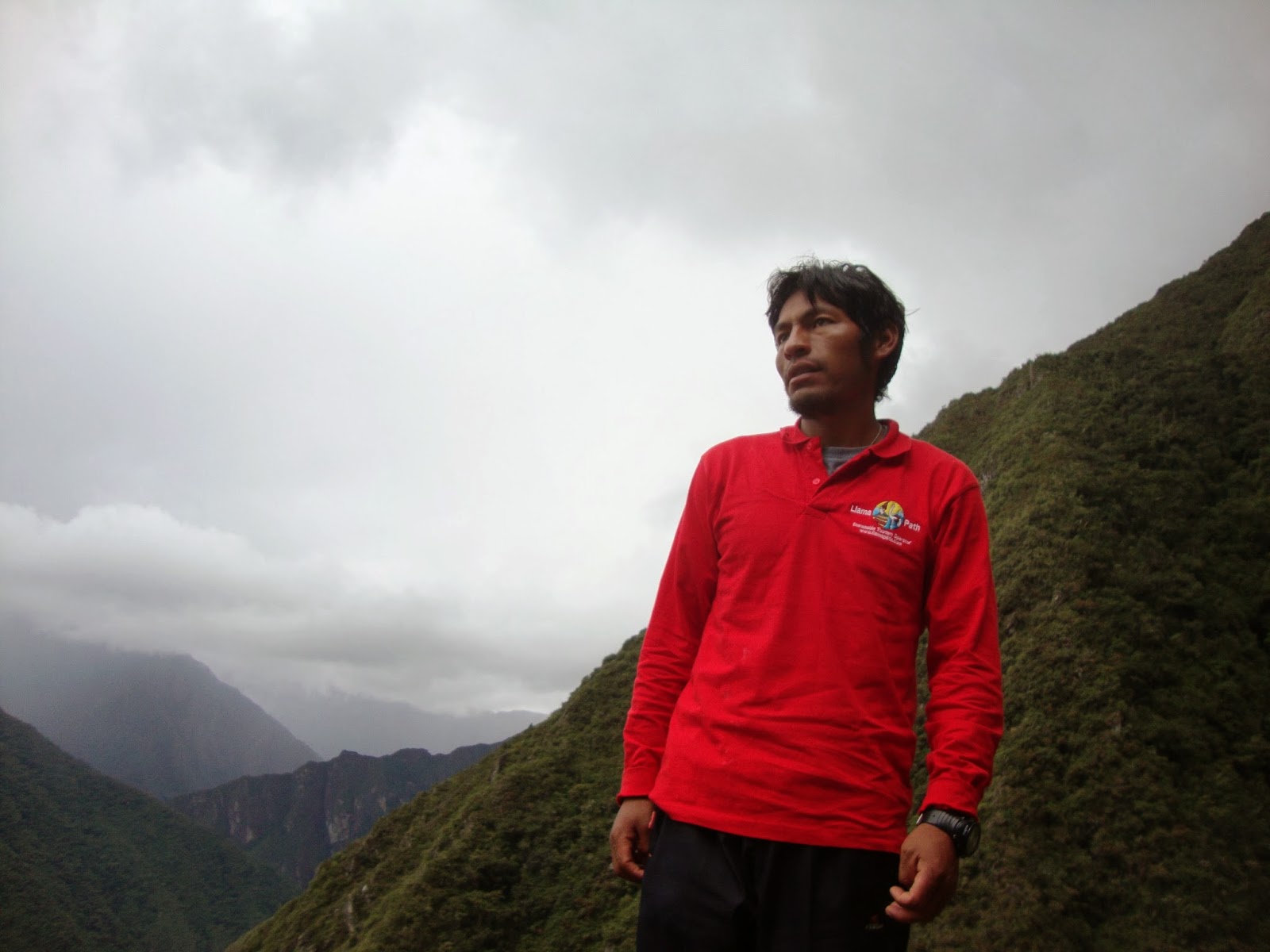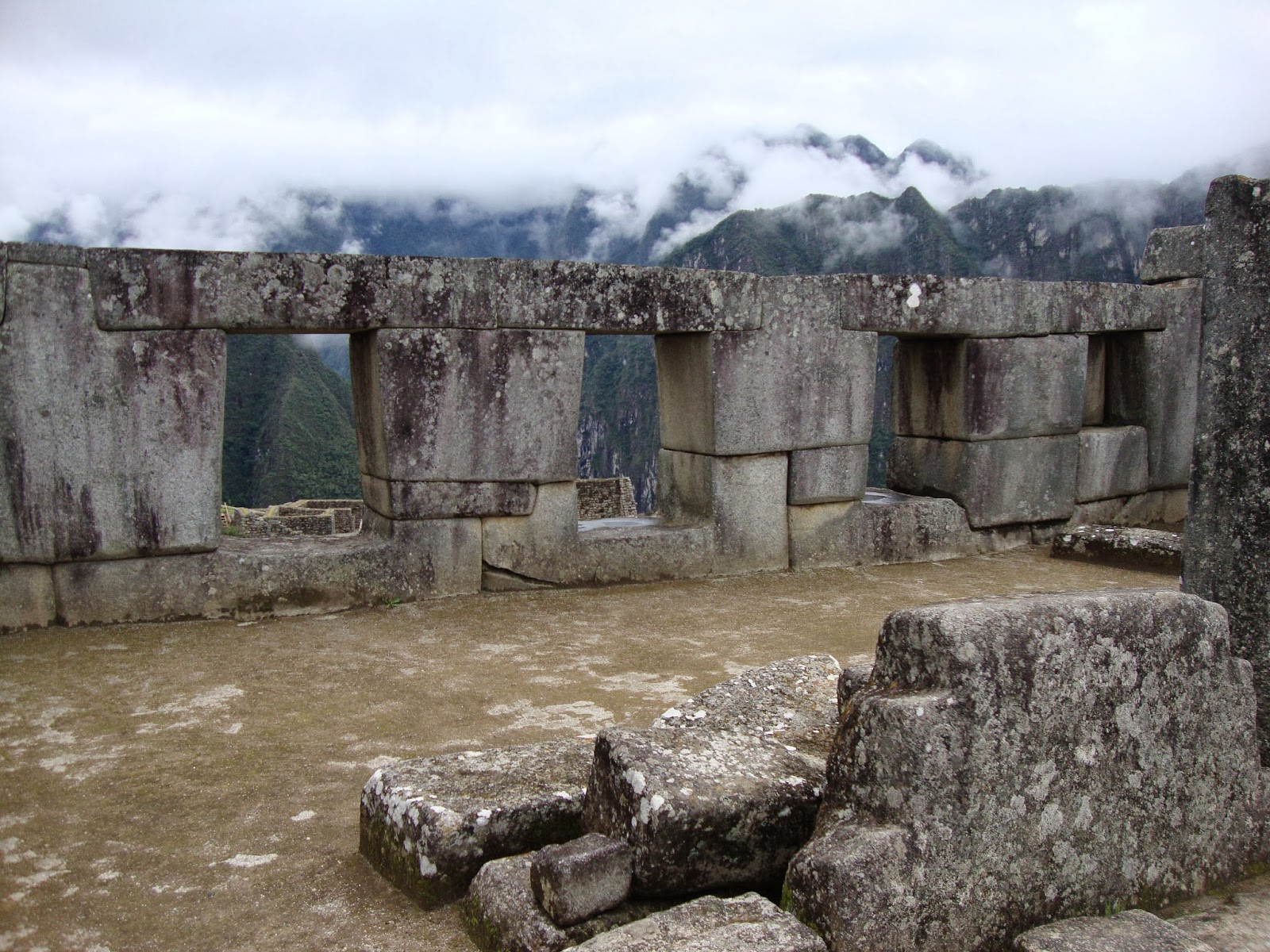Back from Peru
Thanks to Boston Sculptors Gallery member Nora Valdez, many BSG members had the recent opportunity to travel to Peru and exhibit at the Qorikancha Museum in Cusco. Nora not only established the connection for all of us, but curated and orchestrated all the details of the international exhibit. Several sculptors created their work in Peru and some, myself included, choose to create work ahead, allowing time to explore the Sacred Valley and do a two day trek to Machu Picchu.
I've been wanting to visit Peru and especially Machu Picchu for almost 2 decades now, so I saw this as my chance. Here are some highlights.
After flying into Lima on Jan 24th, we flew to Cusco, elevation 11,200 ft, and spent the day acclimatizing by drinking coca tea and sleeping. I learned that no one, especially this sea level dweller, is immuned to altitude sickness and it's best to allow plenty of time to adjust, especially before even modest physical exertion. By Sunday, Jan. 26th, Christos, my husband and favorite travel partner in life and on land, and I took the local bus to Pisac to visit the market. Every day, locals sell and trade their produce and handmades but Sunday is the best.
I could not resist buying some natural dyes, all from local plants, seeds, insects and moss and fixed with salt, lime, alum, acid, and urine.
These are some of the local taxis, souped up motorcycles really, that buzz the streets taking locals and tourists short distances. Each on had it's own personality.
This site at Ollantaytambo was built in the mid-15th century as a ceremonial site but never finished due to the Spanish invasion of 1532.
The Sun Temple or Wall of Six Monoliths was most impressive due to the size of the fitted stones having been carried on roads, ramps, and slides from a quarry 5 km away...
and the way the Incas created complex irrigation systems to redirect water for drinking, bathing, growing and livestock.
At the Center for Traditional Textiles in Chinchero we visited a co-operative where woman demonstrate their craft and sell their exquisite work.
That's a guinea pig house in the back, which they keep as pets, till a special day comes along like Christmas or a birthday, then it's meal time for guinea.
Woman have their small children with them always. We found Peru to be a very family centered culture. That's yarn she'd dying.
Peruvians are quite enterprising and will approach you with anything to make a sol. 1 american dollar equals about 2.8 soles. Everything is quite inexpensive to USA standards.
This small museum had wonderful examples of large ceramic vessels for carrying water on ones back.
Even though it was/is the rainy season in the Andes of Peru, we managed to escape the entire trip without getting wet. Back to Cusco to set up the exhibit, give an artist talk and get packed for the trek to Machu Picchu.
The Qorikancha is an archaeological site in and of itself and it was a true honor to have work in such a special site. As you can see from the open courtyard above, it's an open air museum and Boston Sculptors work, along with other invited South American sculptors work, is exhibited throughout the second level.
I've been wanting to visit Peru and especially Machu Picchu for almost 2 decades now, so I saw this as my chance. Here are some highlights.
After flying into Lima on Jan 24th, we flew to Cusco, elevation 11,200 ft, and spent the day acclimatizing by drinking coca tea and sleeping. I learned that no one, especially this sea level dweller, is immuned to altitude sickness and it's best to allow plenty of time to adjust, especially before even modest physical exertion. By Sunday, Jan. 26th, Christos, my husband and favorite travel partner in life and on land, and I took the local bus to Pisac to visit the market. Every day, locals sell and trade their produce and handmades but Sunday is the best.
Peru's third biggest source of revenue is agriculture, after tourism and mining, and there's no shortage of fresh food. This market far exceeded any farmers market I have even seen.
We learned quickly that nothing is priced and you can expect to haggle over everything from a taxi ride to a bag of potatoes.
We wandered the streets of Pisac a bit and made our way,
again on the bus packed with locals, to Ollantaytambo.
We got lucky and found a great place to say, the Hotel Iskay, where we could hear the river babbling. A good nights rest and off to visit the ruins of Ollantaytambo the next day.
Here's a view of Ollantaytambo looking down from the Inca ruins where the land was terraced and irrigated to yield a variety of fruits and vegetables.
What's remarkable is that the stones fit precisely, with no mortar and are interlocking to prevent seismic shift.
The Sun Temple or Wall of Six Monoliths was most impressive due to the size of the fitted stones having been carried on roads, ramps, and slides from a quarry 5 km away...
Speaking of sustaining life, we had worked up an appetite, climbing the ruins, so I decided to try my first Alpaca burger.
As for Peruvian cuisine, which we quite enjoyed, llama is also popular, as is chicken, ceviche (raw seafood or fish mixed with lime juice and pepper) and guinea pig (bottom left in the case).
After lunch we took the local bus to Urubamba, not a touristy town at all but a working town, which also had a great indoor market.
The colors were a photographers dream!
And the streets were alive with people shopping, selling, working, and on the move.
After a good nights rest, we traveled by bus to Chinchero, land of the weavers, at 12,343 ft.
At the Center for Traditional Textiles in Chinchero we visited a co-operative where woman demonstrate their craft and sell their exquisite work.
Below you'll see woman using a back loom and weaving indigenous patterns, each indicative of the village they are from.
We also learned how the women use local plants, herbs, insects, to make dyes for the alpaca yarn.
That's a guinea pig house in the back, which they keep as pets, till a special day comes along like Christmas or a birthday, then it's meal time for guinea.
Woman have their small children with them always. We found Peru to be a very family centered culture. That's yarn she'd dying.
While in Chinchero we also visited a church, museum and more ruins.
Peruvians are quite enterprising and will approach you with anything to make a sol. 1 american dollar equals about 2.8 soles. Everything is quite inexpensive to USA standards.
This small museum had wonderful examples of large ceramic vessels for carrying water on ones back.
Our guide Xavier, with Llama Path tours, picked us up at 5am in Cusco and we made our way by bus then train along the Rio Urubamba to the beginning of our two day trek along the Inca Trail. Xavier was a wealth of information and shared with us info about Inca history, local flora and fauna, architecture, culture and the Incan beliefs.
Left to right: Altin, Roz, Laura, Christos, me, George, Nancy, Hannah and Jessica
Here's the trekking gang! Not only were we fortunate to have Xavier as our guide, but we stayed dry, had no injuries and all kept the same pace.
At the end of our first day of hiking we got our first view of Machu Picchu. Since it was the end of the day, all the tourists were gone and we had the rare opportunity to see it without the crowds.
After a night of hot springs, a good meal and a comfy hotel in Aguas Calientes, we returned the next morning to a magical and misty Machu Picchu to explore for the day.
Pictures don't even come close to how awesome Machu Picchu (old peak) is. Christos and I thought we'd make our own peak by taking a little yoga break before heading back down to town to join the group, meet out train, then bus, then van on the journey back to Cusco.
Our last full day was finishing up the installation for our exhibit Visions/Visiónes at the Qorikancha Museum.
Artifacto, wax, dye, steel, 72"x96"
In one way or another each artists work was inspired by something Peruvian. My work above, was inspired by Inca artifacts such as pottery, shall pins, knives, tweezers, mace, weaving tools, and hair ornaments recovered at Machu Picchu by archaeologist Hiram Bingham on his expedition in 1912.
The Qorikancha Museum show features artwork by the following artists from the Boston Sculptors Gallery: Caroline Bagenal, Kim Bernard, Murray Dewart, Donna Dodson, Rosalyn Driscoll, Laura Evans, Peter DeCamp Haines, Michelle Lougee, Nancy Winship Milliken, Andy Moerlein, Nancy Selvage, Liz Shepherd, Jessica Straus, Nora Valdez, Hannah Verlin and Joseph Wheelwright alongside notable South American artists such as: Ronald Alvan, Pablo Yactayo, Jacob Sulca, Persi Narvaez, Ivan Tovar, Victor Zuniga, Luis Angulo y Gianfranco Yovera, Carlos Bardales and Xavier Cano.
The Qorikancha Museum show features artwork by the following artists from the Boston Sculptors Gallery: Caroline Bagenal, Kim Bernard, Murray Dewart, Donna Dodson, Rosalyn Driscoll, Laura Evans, Peter DeCamp Haines, Michelle Lougee, Nancy Winship Milliken, Andy Moerlein, Nancy Selvage, Liz Shepherd, Jessica Straus, Nora Valdez, Hannah Verlin and Joseph Wheelwright alongside notable South American artists such as: Ronald Alvan, Pablo Yactayo, Jacob Sulca, Persi Narvaez, Ivan Tovar, Victor Zuniga, Luis Angulo y Gianfranco Yovera, Carlos Bardales and Xavier Cano.
The work will be on view through March 30th, 2014.









































gorgeous photos Kim! I was there 2 years ago w.my family...loved the food in Lima, and machu picchu is beyond words.
ReplyDeleteLOVE the way the stones fit together.
Whoa! What a wonderful Peruian adventure! The photos are simply gorgeous and you must be full of inspiration. What color!
ReplyDeleteWelcome back and thank you for sharing.
Thanks for sending me on a vicarious adventure! The photos are beautiful and filled with luscious color.
ReplyDelete